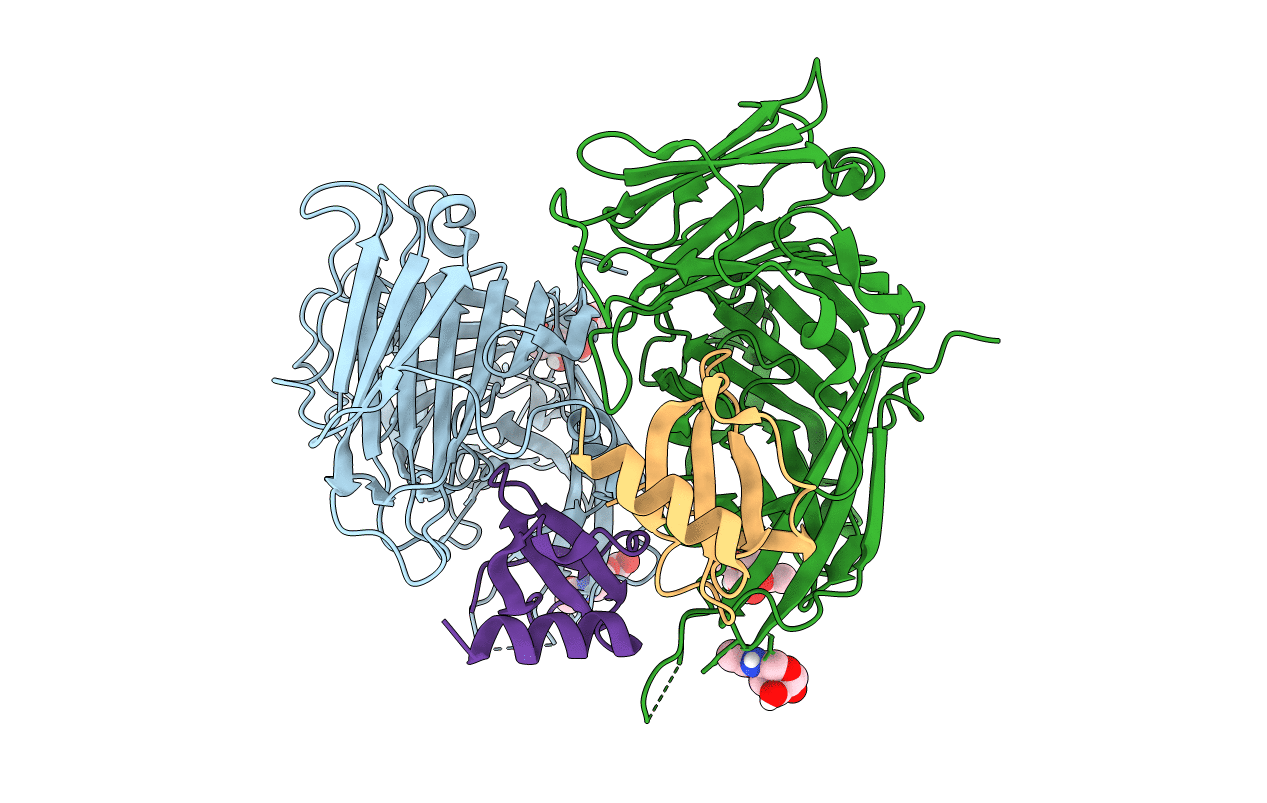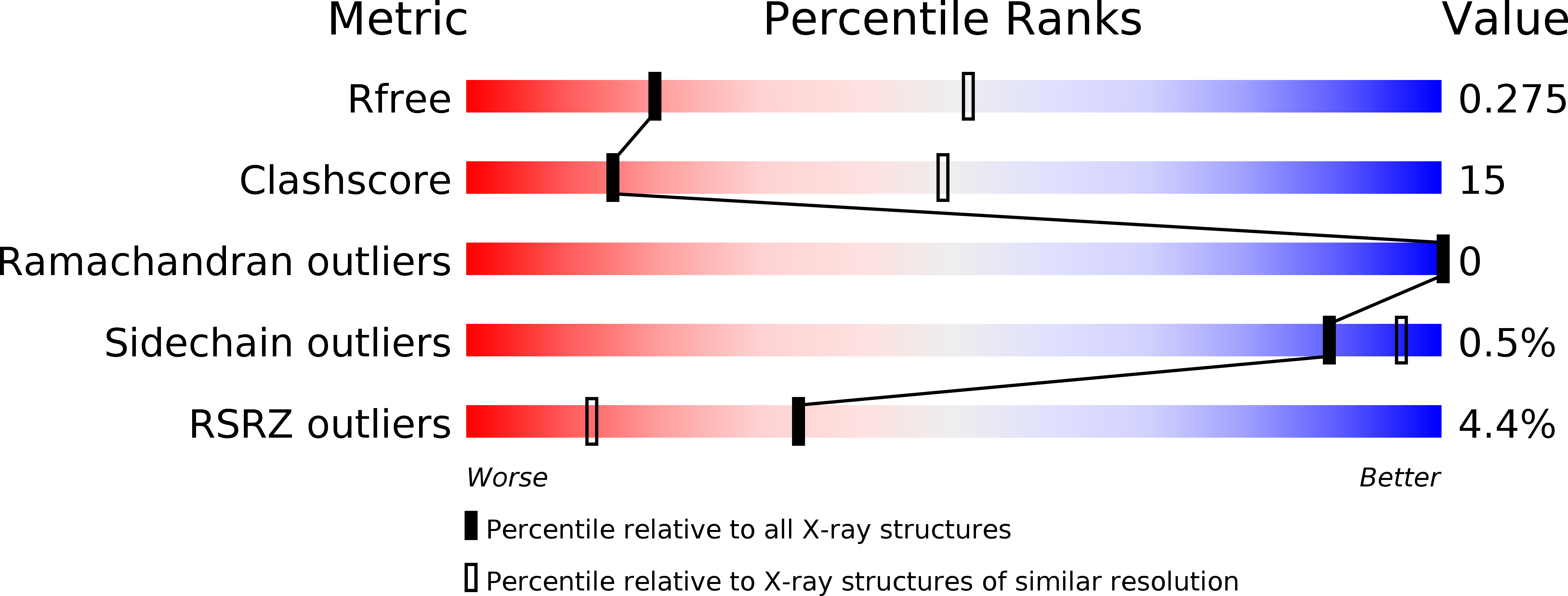
Deposition Date
2015-05-01
Release Date
2015-11-18
Last Version Date
2024-11-13
Entry Detail
PDB ID:
4ZLT
Keywords:
Title:
Crystal structure of viral chemokine binding protein R17 in complex with CCL3
Biological Source:
Source Organism:
Cricetid herpesvirus 2 (Taxon ID: 1605972)
Mus musculus (Taxon ID: 10090)
Mus musculus (Taxon ID: 10090)
Host Organism:
Method Details:
Experimental Method:
Resolution:
3.00 Å
R-Value Free:
0.27
R-Value Work:
0.21
R-Value Observed:
0.21
Space Group:
I 2 2 2


